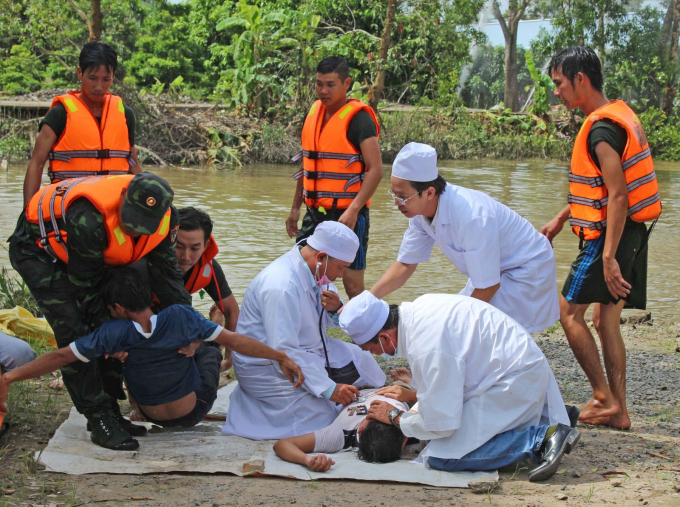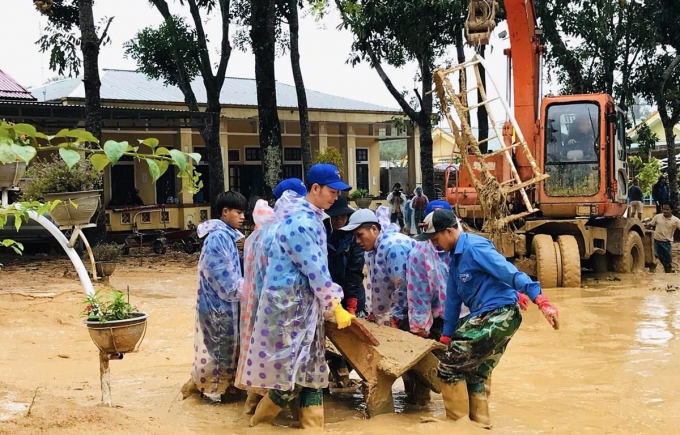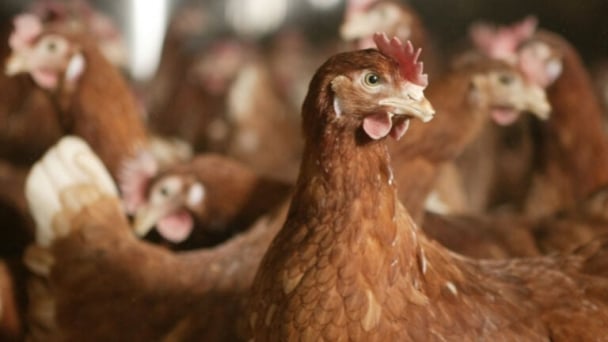June 25, 2025 | 14:45 GMT +7
June 25, 2025 | 14:45 GMT +7
Hotline: 0913.378.918
June 25, 2025 | 14:45 GMT +7
Hotline: 0913.378.918

The role of the community in disaster prevention and control is critical.
On July 13, 2009, the Prime Minister issued Decision No. 1002/QD-TTg approving the Project "Strengthening public awareness and community-based disaster risk management" (Project 1002).
According to the General Department of Natural Disaster Prevention and Control (Ministry of Agriculture and Rural Development), following the guidance of the Ministry of Agriculture and Rural Development, the Ministry of Education and Training, specialized agencies at the central level, local authorities at all levels implemented capacity building for officials and people.
Specifically, localities have actively and actively organized propaganda, dissemination, and education of laws and community-based disaster risk dissemination in many forms, especially social networks.
In organizing drills and building essential infrastructure, localities have coordinated with agencies and units located in the area, domestic and foreign organizations (including military forces, Police, Provincial Red Cross, militia and self-defense forces, shock teams in communes,...); organized 983 case drills in 301 communes across the country; Installing 2,914 systems and equipment for communication and disaster warning in the community; to build 5,324 small-scale works in combination with disaster risk prevention, control, and mitigation in the community.
In 2020, localities received over 4,000 permanent houses for people in areas frequently affected by natural disasters such as storms and floods.
The model of planning for disaster prevention and control and livelihood development has the participation of the community, with the direct guidance of the Women's Union, Farmers' Union, and Youth Union.
Model of centralized babysitting; the model of transporting children during the rainy season has been implemented in two provinces of An Giang and Dong Thap during each flood season. The model of proactively implementing community empowerment in the locality has been implemented very well by Lao Cai province.
After more than ten years of implementing the project, people's capacity has been gradually improved, become more proactive in preventing and responding to natural disasters, and quickly overcoming the consequences and stabilizing their lives after natural disasters, thereby minimizing loss of life and property.
On April 6, 2021, the Prime Minister issued Decision No. 553/QD-TTg approving the project "Strengthening public awareness and community-based disaster risk management, up to 2030" (Project 553).
The overall goal of Project 553 is to raise awareness of natural disasters and disaster response capacity for staff working in disaster prevention and control; contribute to building a safe community capable of adapting to climate change; form a culture of prevention, proactively and actively participate in disaster prevention and management of the majority of people, minimizing damage to people, property and the environment caused by natural disasters.

The localities have actively and actively organized propaganda, dissemination, and education of the law and community-based disaster risk.
The approved Project 553 has been adjusted with many new contents and tasks to suit practical requirements and the current natural disaster situation. Also, inheriting many lessons learned and typical models of community awareness-raising and community-based disaster risk management that have been drawn up in the implementation process from the previous stage to public awareness-raising activities are being deployed more widely, effectively, and sustainably.
Immediately after Project 553 was promulgated, within a short time, the General Department of Natural Disaster Prevention and Control advised and submitted to the Ministry of Agriculture and Rural Development to issue guiding documents and urge ministries, branches, and localities to build the project implementation plan;
Approving the annual and 5-year plans for implementing Project 553 of the Ministry of Agriculture and Rural Development, associated with the construction of a new rural area;
Signing a cooperation program with the Vietnam Elderly Association in the implementation of Project 553 to 2025;
Calling some donors and NGOs to support resources to implement the Scheme; Developing technical documents and propagating disaster risk reduction and prevention for specific audiences;
Organized a nationwide online training conference, guiding the development of disaster prevention plans in the context of the Covid-19 epidemic with nearly 1,000 points of attendance at all levels in 63 provinces/cities.
In the coming time, for the implementation of Project 553 to be effective, it is necessary to continue to review and perfect the system of mechanisms and policies to support community capacity building in disaster prevention, ensuring compliance suitable to actual conditions; guiding localities to promulgate specific mechanisms and procedures to implement the contents of the project.
Also, promote the propaganda, training to raise awareness for the contingent of authorities and officials in charge of natural disaster prevention and control at all levels; teachers, pupils, students; village head, village elder, the village head, prestigious people in the community; enterprise; the team of reporters; associations and unions; residents of the regions; improve the quality of emulation movements to raise public awareness.
Translated by Ha Phuc

(VAN) Research has shown that Hy-Line brown hens may be better suited for cage-free production based on overall greater egg production and other quality metrics.
![Turning wind and rain into action: [9] Digitizing hydrometeorological data in response to climate change](https://t.ex-cdn.com/nongnghiepmoitruong.vn/608w/files/news/2025/06/17/z6704423696987_15fd32ffc26d590d204d520c9dac6786-nongnghiep-165943.jpg)
(VAN) Farmers have begun accessing hydrometeorological applications to adjust their cropping schedules, aiming to ensure productivity and adapt to climate change.
![Turning wind and rain into action: [8] Real-time salinity detection and early warning technology](https://t.ex-cdn.com/nongnghiepmoitruong.vn/608w/files/news/2025/06/17/z6704423696987_15fd32ffc26d590d204d520c9dac6786-nongnghiep-151127.jpg)
(VAN) Thanks to the integration of modern hydrological-hydraulic models, remote sensing technologies, and artificial intelligence, the accuracy of hydrological forecasting has significantly improved.
![Turning wind and rain into action: [7] Early disaster warnings help marine farmers minimize losses](https://t.ex-cdn.com/nongnghiepmoitruong.vn/608w/files/news/2025/06/17/z6704423696987_15fd32ffc26d590d204d520c9dac6786-nongnghiep-142942.jpg)
(VAN) In recent years, thanks to early disaster warnings and forecasting, marine farmers in Khanh Hoa province have been able to reduce risks and losses, thereby improving production efficiency.
![Turning wind and rain into action: [6] ‘Four on-the-spot’ disaster management software](https://t.ex-cdn.com/nongnghiepmoitruong.vn/608w/files/news/2025/06/17/e5a48259d6a262fc3bb3-nongnghiep-183800.jpg)
(VAN) By simply activating the scenario on the disaster management software, the relevant authorities immediately know how many households need to be evacuated, where to evacuate them to, and by what means of transportation…
![Turning wind and rain into action: [5] Hue applies modern technology in disaster forecasting](https://t.ex-cdn.com/nongnghiepmoitruong.vn/608w/files/news/2025/06/17/z6704423696987_15fd32ffc26d590d204d520c9dac6786-nongnghiep-093938.jpg)
(VAN) In Hue city, modern technology has recently been applied in meteorological and hydrological forecasting and warning, helping to reduce the damage caused by natural disasters.

(VAN) A cutting-edge farming technique being implemented on an experimental ranch in Arizona's Sonoran Desert has already saved a billion gallons of water over five years, according to Civil Eats.